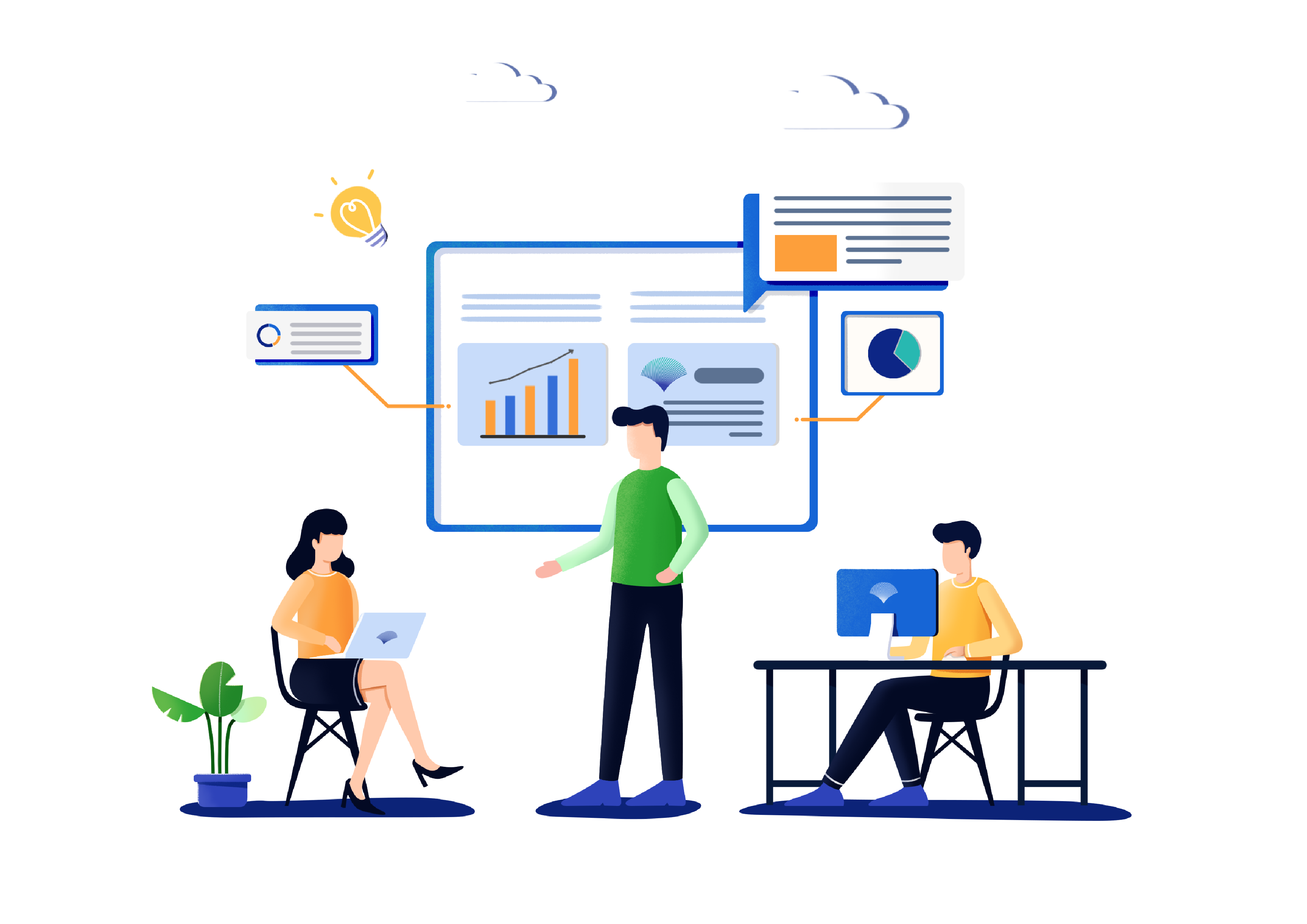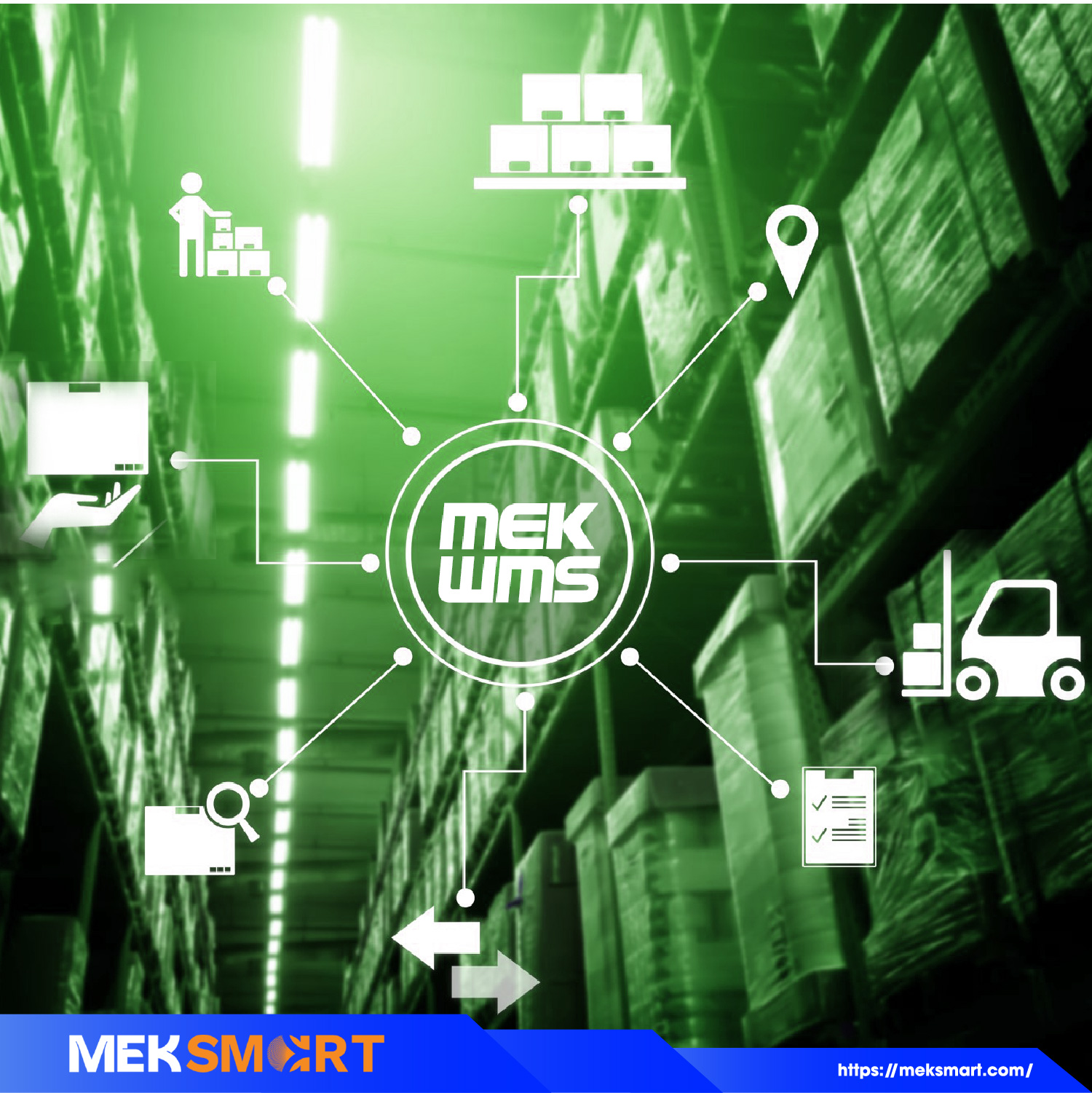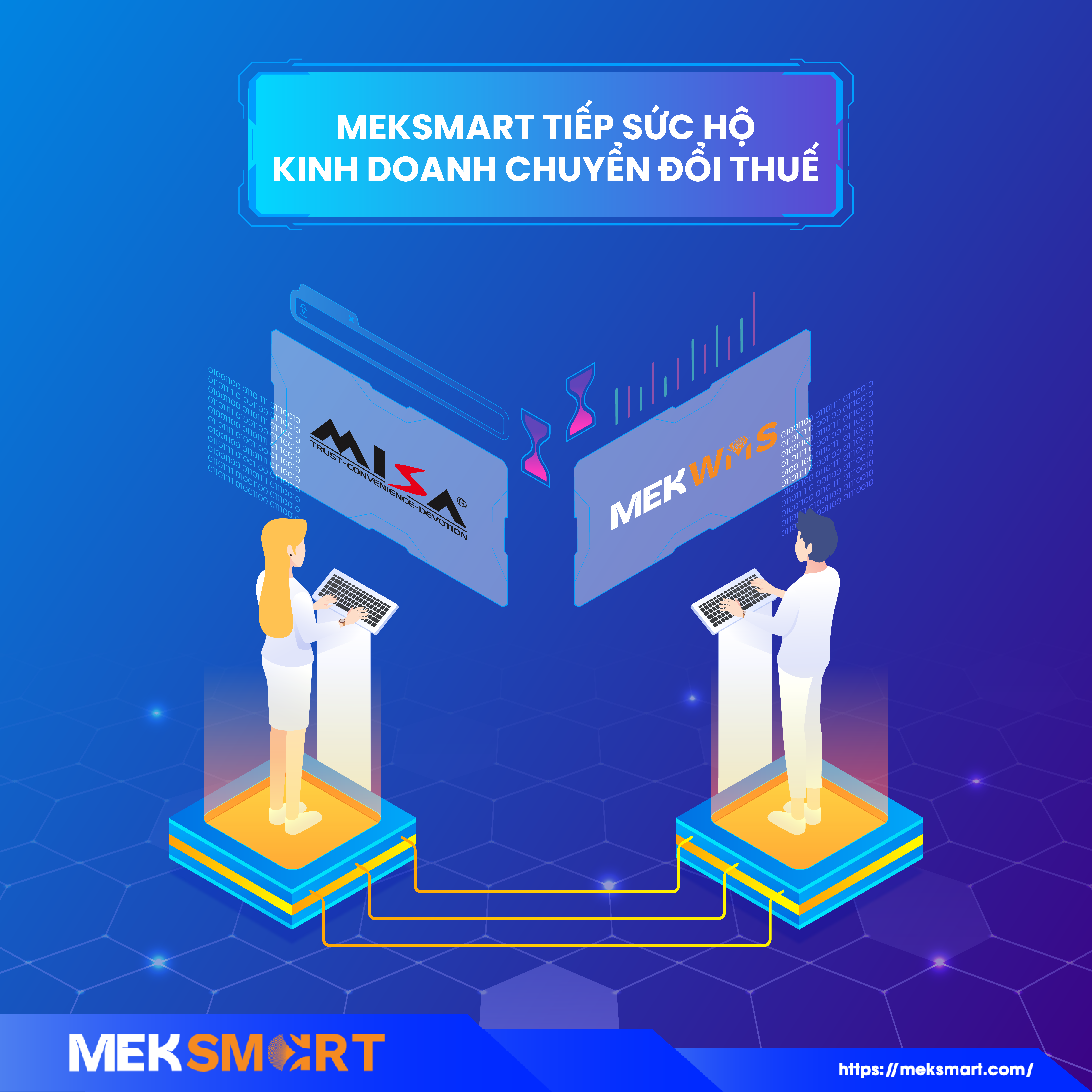MEKSMART
GENERAL NEWS
Author: Meker M
Update: 14/12/2022
AI AND MACHINE LEARNING FOR 2021
Highlights
Covid-19 is driving investment in AI, with 86% of organizations agreeing that the pandemic is causing their organization to invest in new AI initiatives. Skills shortages still exist in AI, but they are becoming more diverse as AI becomes more deeply embedded in organizations. Companies are looking for roles such as cloud architects, as well as data scientists. While big language models will drive innovation in natural language processing, AI chips will be exported in greater quantities than ever before and could drive AI-related M&A in 2021.
Introduce
AI and Machine Learning may still be hot issues and a top priority for tech decision-makers – businesses and investors alike, but that doesn't stop a number of AI initiatives from expanding in 2020. In our 2020 AI Infrastructure Vote survey released in July, 58% of organizations expect COVID-19 to have a negative impact on existing AI initiatives. have, and 19% said the pandemic had stopped them from working on these projects. But 75% of organizations say COVID-19 has led to new AI initiatives. In our just-released data from the 2021 AI ML Use Cases Vote survey, the big picture has changed and things look for the better, with 86% agreeing that the pandemic has or will get their organizations to invest in new AI initiatives. With the uncertainty caused by the pandemic still enveloping us all, this report looks at some of the key trends in AI we expect to see in 2021.
The skills shortage isn't just data scientists
As Machine Learning gradually becomes a core part of software development, the roles that have contributed to the development of the past half-century of code will become a key hiring requirement for organizations looking to implement learning. their own machine. These roles won't be exactly the same as those in 'traditional' software development, but we can see trends in regular end-user surveys. The scarcity of legendary data scientists is still real, but it's not the only place organizations are looking. In our survey on AI & Machine Learning Enterprise Voices conducted in the summer of 2018, the lack of skilled resource skills was cited by 36% of respondents as the most important barrier (compared to 36% of respondents). data access and preparation is second at 16%), and data scientists are by far the most sought-after profession. In our latest survey, cloud architects came out on top with 27%, followed by machine learning engineers, software engineers, and then data scientists who were chosen by 23%. . So, data scientists are still in short supply, but the multidisciplinary nature of AI and ML is now reflected in many of the roles companies are hiring, because it is a combination of ML skills, IT skills in general and understanding of business fields in particular.

Massive language models set to change the conversation
Language models are pre-trained models that predict the probability of a sequence of words and produce that text. A turning point happened when Google introduced Transformer language models in 2017; they look at all the words in a sentence at once, rather than in sequential order, and can process much longer sequences of information. Google released the Two-Way Coding Representation from Transformers (BERT) in 2018 and implemented the technology in its web search engine in 2019. BERT has 340 million parameters: defined variables by training data.
Microsoft launched the Turing-NLG model in February 2020 with 17 billion parameters, and OpenAI launched GPT-3 in June with 175 billion parameters (GPT-2 in 2019 has 1.5 billion). Here size plays an important role because the larger the number of parameters, the better the model interprets the information in the context, even with limited training in the particular context. But these models are huge and expensive to build and operate, so there will be a challenge in making them workable in terms of computing resources and energy consumption.
For early days use cases, but a lot of things such as advanced chatbots, writing summaries of complex research articles or news articles, content moderation, generating software code from describe the problem, automate more of the e-discovery process, and maybe one day disrupting enterprise search could truly expand – eventually allowing employees to find information in context for any kind of query no matter how complex
Aspects of these models are controversial because the ability to generate text can be anything, including fake histories, racist text, or other abusive issues, depending on the data they were trained on (as long as it's in English – lack of multilingualism is another problem that needs to be addressed). This has led Microsoft and its OpenAI partner to restrict access to its latest models to approved use cases. We expect this trend to continue into 2021, but with even more massive language models and revealing potential use cases for enterprises.
Microsoft launched the Turing-NLG model in February 2020 with 17 billion parameters, and OpenAI launched GPT-3 in June with 175 billion parameters (GPT-2 in 2019 has 1.5 billion). Here size plays an important role because the larger the number of parameters, the better the model interprets the information in the context, even with limited training in the particular context. But these models are huge and expensive to build and operate, so there will be a challenge in making them workable in terms of computing resources and energy consumption.
For early days use cases, but a lot of things such as advanced chatbots, writing summaries of complex research articles or news articles, content moderation, generating software code from describe the problem, automate more of the e-discovery process, and maybe one day disrupting enterprise search could truly expand – eventually allowing employees to find information in context for any kind of query no matter how complex
Aspects of these models are controversial because the ability to generate text can be anything, including fake histories, racist text, or other abusive issues, depending on the data they were trained on (as long as it's in English – lack of multilingualism is another problem that needs to be addressed). This has led Microsoft and its OpenAI partner to restrict access to its latest models to approved use cases. We expect this trend to continue into 2021, but with even more massive language models and revealing potential use cases for enterprises.
AI chips will be shipped and purchased
The AI chip story will probably be dominated in 2021 by NVIDIA's continuous acquisition of ARM, which can be completed by the end of 2021 or in 2022 or never, depending on the opinions of the regulatory agencies. competition around the world. However, there are many other chip vendors that are more AI-focused at different stages of maturity. Some of the types we detailed in early 2019 have been around for four or five years now and will ship products, hoping (for them) to secure some major partnerships in 2019. 2021.
And Intel, with a new CEO with roots in the company, will be hoping to build on the Habana acquisition in late 2019 and secure more revenue streams for a second bite at Chip AI Cherry. Also, with the large number of chip companies accelerating around – more than 40 times as of last time – we expect some consolidation. Intel is the leader in that respect, but the company's record is still pretty patchy, and the new CEO may want to take a different approach — or double down. The major cloud platforms can also reach out to startups that offer unique functionality or hit some sort of performance benchmark.
As mentioned in the AI Data & Analytics 2021 preview, large pre-trained language models have the potential to bring about a step change in our ability to interpret and generate language. The potential use cases are vast, but the challenges surrounding people with access to such models will persist for some time, both in terms of the massive computing resources required to operate. them and the uncertain governance frameworks they may need. There's more to the major language models in the 2021 preview channel.
And Intel, with a new CEO with roots in the company, will be hoping to build on the Habana acquisition in late 2019 and secure more revenue streams for a second bite at Chip AI Cherry. Also, with the large number of chip companies accelerating around – more than 40 times as of last time – we expect some consolidation. Intel is the leader in that respect, but the company's record is still pretty patchy, and the new CEO may want to take a different approach — or double down. The major cloud platforms can also reach out to startups that offer unique functionality or hit some sort of performance benchmark.
As mentioned in the AI Data & Analytics 2021 preview, large pre-trained language models have the potential to bring about a step change in our ability to interpret and generate language. The potential use cases are vast, but the challenges surrounding people with access to such models will persist for some time, both in terms of the massive computing resources required to operate. them and the uncertain governance frameworks they may need. There's more to the major language models in the 2021 preview channel.
AI production goes beyond early adoption
It's hard to pick one industry that captures the attention, but manufacturing looks like it will play a prominent role in AI adoption in 2021, judging not only by market dynamics but also by what we've seen. observed in 2020, but also the attention it is currently receiving from well-known vendors, after startups engaged in monopolistic activity over the past few years. The desire to automate parts of the manufacturing process has accelerated.
According to our Business Voices: Digital Pulse survey, Supplier Review 2020 published in October 2020 found that 62% of manufacturers surveyed consider AI/ML to be the technology. most transformative in the next two years, based on previous assessment of the following industries when it comes to leading cutting-edge technologies, excluding semiconductor manufacturing, among others.
The key use cases identified in our new 2021 AI ML Use Cases survey are led by quality assurance, data/digital security, inventory monitoring, and predictive maintenance/condition-based maintenance. Looking into the future over the next two years, assembly line creation and optimization as well as messaging employee safety requirements (including social distancing) join the top 4.
According to our Business Voices: Digital Pulse survey, Supplier Review 2020 published in October 2020 found that 62% of manufacturers surveyed consider AI/ML to be the technology. most transformative in the next two years, based on previous assessment of the following industries when it comes to leading cutting-edge technologies, excluding semiconductor manufacturing, among others.
The key use cases identified in our new 2021 AI ML Use Cases survey are led by quality assurance, data/digital security, inventory monitoring, and predictive maintenance/condition-based maintenance. Looking into the future over the next two years, assembly line creation and optimization as well as messaging employee safety requirements (including social distancing) join the top 4.
Technology is becoming a controlled industry
Technology is becoming an industry that manages complex systems, and the biggest social media companies will start hiring compliance teams in earnest. While not the type of AI company we follow, the tragedies of Twitter, Facebook, Parler, and others in recent weeks of political turmoil in the US have made clear the influence of this company. And if politicians didn't think about regulations before, we bet more than that now.
Then there are back-end vendors that have also taken action — less visible and not much to do with free speech, but also with consequences — including AWS, Salesforce, and Stripe, which have pulled out. the industry provides its services to a number of Trump-related entities. Of course, some of those companies would welcome the regulation. It will help define the boundaries of engagement and remove some of the incredibly difficult decisions they've been making. The result of this is that such companies will widely employ highly compliant employees.
Another factor to consider when thinking about technology (or at least its software) and regulation is the difference between it and more tangible items like oil or food, where your product can be used immediately (in most cases) in a country other than the one in which it was created. Therefore, the focus on regulation needs to go beyond your own borders, assuming you have more than just short-sighted ambition.
Then there are back-end vendors that have also taken action — less visible and not much to do with free speech, but also with consequences — including AWS, Salesforce, and Stripe, which have pulled out. the industry provides its services to a number of Trump-related entities. Of course, some of those companies would welcome the regulation. It will help define the boundaries of engagement and remove some of the incredibly difficult decisions they've been making. The result of this is that such companies will widely employ highly compliant employees.
Another factor to consider when thinking about technology (or at least its software) and regulation is the difference between it and more tangible items like oil or food, where your product can be used immediately (in most cases) in a country other than the one in which it was created. Therefore, the focus on regulation needs to go beyond your own borders, assuming you have more than just short-sighted ambition.
National AI strategies often have real money attached to them
National AI strategies have been implemented over the past few years. But now that that significant amount of money is being committed to government-funded AI projects, we expect more strategies and frameworks to be in place. In the United States, for example, a new defense bill (the Defense Authorization for Financing Act of 2021) became law at the start of the year and sets aside $6.4 billion in government funding for initiatives by WHO.
These include the creation of the White House-led National Office of Artificial Intelligence Initiatives, which aims to ensure that AI technologies acquired by the Pentagon are ethically sound and require the Institute of Standards and Technology. National Technology Institute (NIST) developed an AI Risk Management Structure. With the money pouring in and with a new administration that is a bit more detail-focused than the previous one, coming to power this month, we think there will be more governance.
These include the creation of the White House-led National Office of Artificial Intelligence Initiatives, which aims to ensure that AI technologies acquired by the Pentagon are ethically sound and require the Institute of Standards and Technology. National Technology Institute (NIST) developed an AI Risk Management Structure. With the money pouring in and with a new administration that is a bit more detail-focused than the previous one, coming to power this month, we think there will be more governance.
In the UK - now officially leaving the European Union - the UK AI Council's non-statutory expert committee of independent advisors established in 2019 has published the AI Roadmap to advise the UK government and 'puts the UK at the forefront of the data and artificial intelligence revolution.' Details can be found in our report.
China began developing a national AI strategy in 2017 when the State Council of China published the Plan for the Development of a New Generation of Artificial Intelligence. The goal is to become "the world's dominant AI innovation hub" by 2030, with the Ministry of Science and Technology (MOST) responsible for the technical implementation side. With US-China relations severely strained and unlikely to change drastically anytime soon, we expect the Chinese government to be on track to pursue its goals by 2021.
China began developing a national AI strategy in 2017 when the State Council of China published the Plan for the Development of a New Generation of Artificial Intelligence. The goal is to become "the world's dominant AI innovation hub" by 2030, with the Ministry of Science and Technology (MOST) responsible for the technical implementation side. With US-China relations severely strained and unlikely to change drastically anytime soon, we expect the Chinese government to be on track to pursue its goals by 2021.
Resource: spglobal.com













